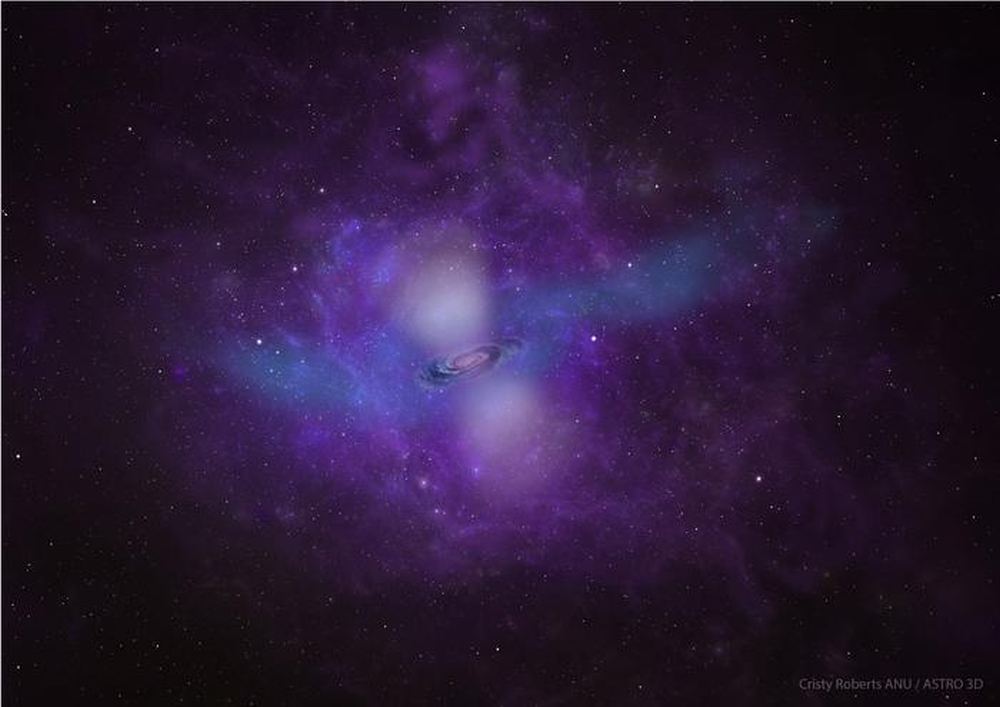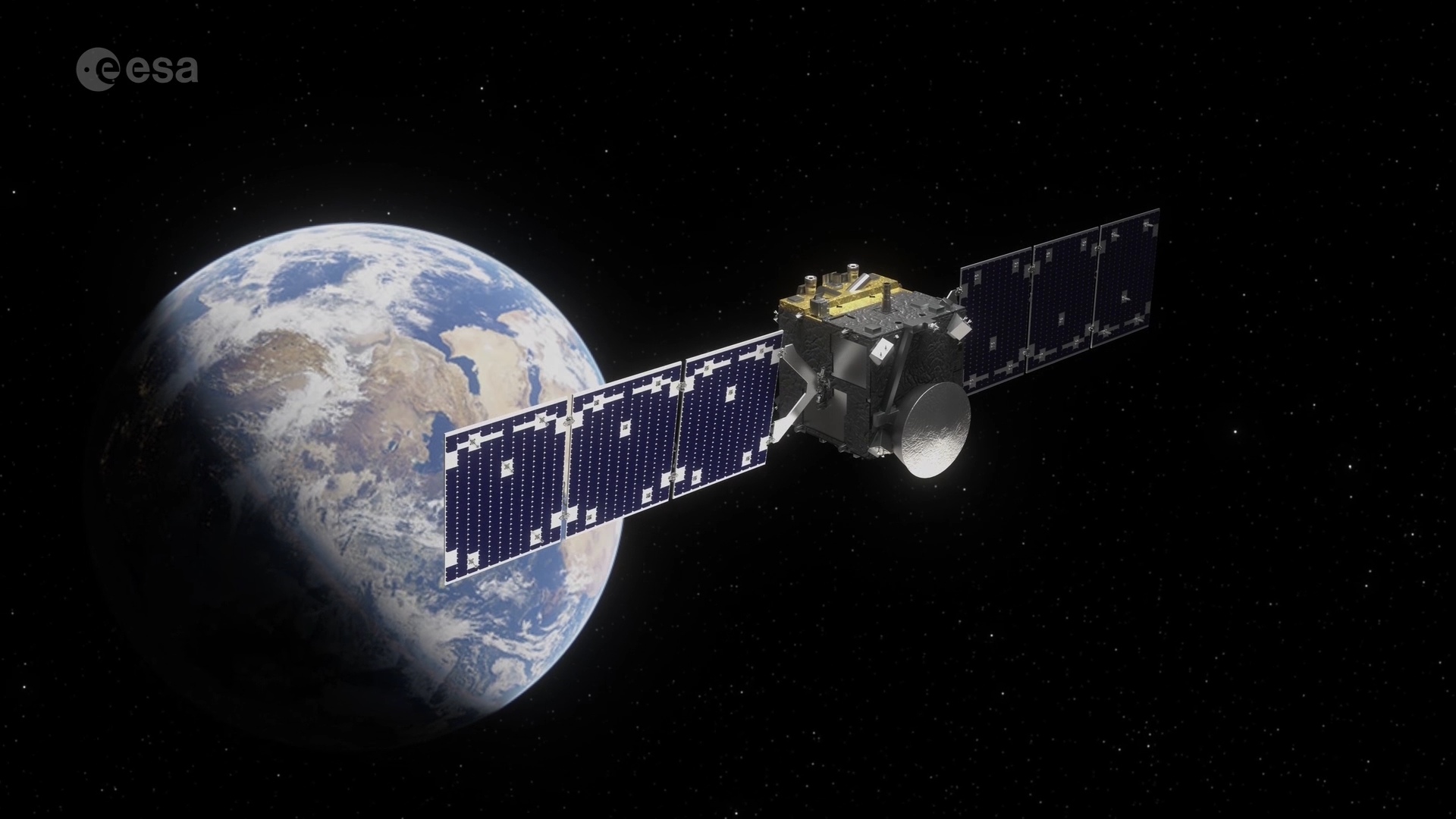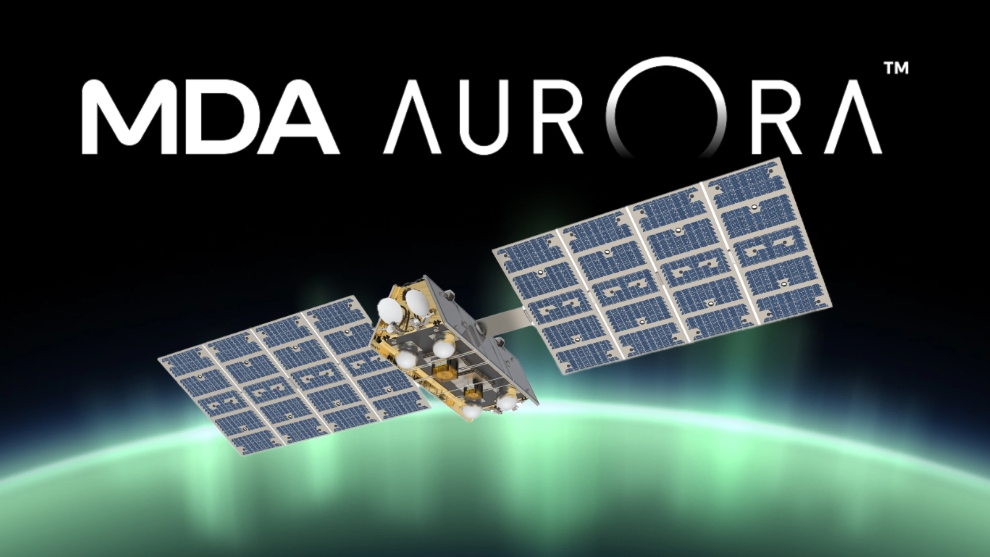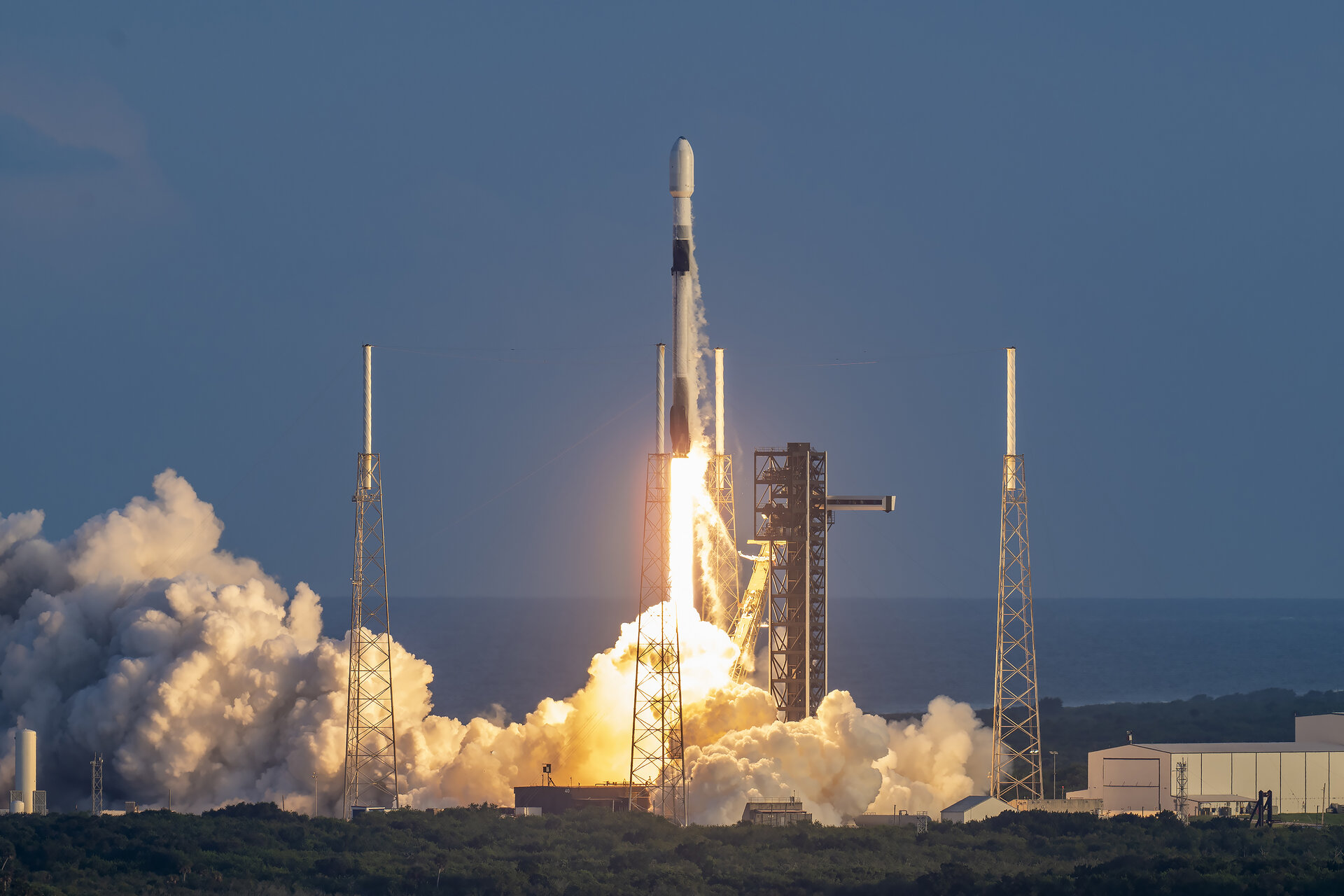Ask most people what a galaxy is made up of, and they’ll say it’s made of stars. Our own galaxy, the Milky Way, hosts between about 100 to 300 billion stars, and we can see thousands of them with our unaided eyes. But most of a galaxy’s mass is actually gas, and the extent of the gas has been difficult to measure.
Researchers have found a way to see how far that gas extends into the cosmos.
One of the foundational questions about galaxies concerns their size. If we limit our observations to stars, then our galaxy, for example, is about 26.8 kiloparsecs, or about 87,000 light-years, across. Our neighbour, Andromeda, is about 46.56 kpcs or 152,000 light-years across. But do these measurements really define the sizes?
In new research published in Nature Astronomy, researchers measured the reach of the gas that extends beyond a galaxy’s stellar population. It’s titled “An emission map of the disk–circumgalactic medium transition in starburst IRAS 08339+6517.” The lead author is Nikole Nielsen, a researcher with Swinburne University and ASTRO 3D and an Assistant Professor at the University of Oklahoma.
Galaxies have gaseous haloes that serve as reservoirs of star-forming material called the circumgalactic medium (CGM). The CGM interfaces with the intergalactic medium (IGM), which is yet more gas that exists between galaxies. The CGM is notoriously difficult to observe because it’s so diffuse and extended. But it makes up about 70% of a typical galaxy (ignoring dark matter) and plays an important role. “This diffuse reservoir of gas, the circumgalactic medium, acts as the interface between a galaxy and the cosmic web that connects galaxies,” the authors explain in their paper.
Astronomers rely on bright background objects to try to observe the CGM. Things like distant quasars, pulsars, or other galaxies can light up the gas and allow astronomers to measure its spectra. But that only works when things line up right, and it only produces a beam-like image of the galaxy.
In this new research, a team of astronomers found a different way of observing the CGM. They used the Keck Cosmic Web Imager (KCWI) on the 10-meter Keck telescope in Hawaii to observe the gas around IRAS 08339+6517. Rather than a limited, beam-like look at the gas, they were able to detect the clouds of gas well outside the typical confines of a galaxy, out to 100,000 light-years beyond the limit of the starlight that typically defines a galaxy.
“We present kiloparsec-scale-resolution integral field spectroscopy of emission lines that trace cool ionized gas from the centre of a nearby galaxy to 30 kpcs into its circumgalactic medium,” the authors write. In their paper, they explain that “… we obtain the equivalent of thousands of quasar sightlines around a single galaxy.”
IRAS 08339+6517 is a starburst galaxy about 56 kpcs away. A starburst galaxy is one that is birthing stars at an extraordinarily high rate. Hubble images show that it’s a face-on spiral galaxy, and 90% of its starlight is contained within a radius of about 2.4 kpcs. “Unlike normal spirals, it has quite extreme properties, with a star formation rate (SFR) = 12.1 solar masses yr-1) that is ~ 10 times higher than typical for its mass and stellar populations that are dominated by very young (~ 4 – 6 Myr) stars,” the authors write.
The researchers found that as the CGM extends beyond the galaxy, the physical properties of the hydrogen and oxygen in the gas changed. The change was ubiquitous at a certain distance and indicates that the gas is interacting with different energy sources.
“We found it everywhere we looked, which was really exciting and kind of surprising,” said lead author Nielsen. “We’re now seeing where the galaxy’s influence stops, the transition where it becomes part of more of what’s surrounding the galaxy, and, eventually, where it joins the wider cosmic web and other galaxies. These are all usually fuzzy boundaries.”
“But in this case, we seem to have found a fairly clear boundary in this galaxy between its interstellar medium and its circumgalactic medium,” said Professor Nielsen.
“In the CGM, the gas is being heated by something other than typical conditions inside galaxies; this likely includes heating from the diffuse emissions from the collective galaxies in the Universe, and possibly some contribution is due to shocks,” said Dr Nielsen.
The boundary is where the gas is heated differently inside the galaxy compared to outside the galaxy. Inside the galaxy’s disk, gas is being photoionized by HII (ionized atomic hydrogen) star-forming regions. At further distances, the gas is being ionized by shocks or the extragalactic UV background.
“It’s this interesting change that is important and provides some answers to the question of where a galaxy ends,” she says.
These results make a contribution to one of the most interesting issues in astronomy: How do galaxies evolve?
Gas flows into galaxies and becomes fuel for more star formation. At the same time, gas flows out from a galaxy as part of stellar feedback. There are three broad types of galaxies: starburst galaxies with extreme amounts of star formation, quenched galaxies with very little star formation, and galaxies in between. The gas in the CGM and the IGM play roles in a galaxy’s gas budget.
IRAS08 has a remarkably strong outflow of gas, but its metallicity profile is flat and shallow. Astronomers typically assume that galaxies with these metallicities and high SFRs are acquiring significant amounts of gas. Other scientific observations of IRAS08 indicate “a rapid inflow of gas to the center of the disk that is fueling the very strong starburst and subsequently strong outflows,” the authors explain.

However, IRAS 08 is a complex object that’s also interacting with a nearby galaxy. “VLA observations of the HI gas around IRAS08 identified a filament extending out to ~ 40 kpcs from the galaxy and containing 70% of the neutral gas in the system,” the authors write. This filament interacts with a neighbouring galaxy about 60 kpcs away, which is only one-tenth the mass of IRAS-08.
The authors say that this interaction with its neighbour could enhance star formation, but there’s no evidence that it’s affecting IRAS-08’s morphology. This doesn’t appear to be the first stage of an eventual merger.
Finding the boundary between the CGM and the IGM could be a critical step in understanding how gas cycles in and out of galaxies and how gas may interact with neighbours without a merger.
“The circumgalactic medium plays a huge role in that cycling of that gas,” says Dr Nielsen. “So, being able to understand what the CGM looks like around galaxies of different types – ones that are star-forming, those that are no longer star-forming, and those that are transitioning between the two –we can observe differences in this gas, which might drive the differences within the galaxies themselves, and changes in this reservoir may actually be driving the changes in the galaxy itself.”
Nature has few discrete boundaries. Everything interacts with other things, including massive galaxies. The interactions hold the key to understanding.
These results could open up a whole new window into how galaxies, gas, and stars interact and how galaxies evolve.





No comments! Be the first commenter?